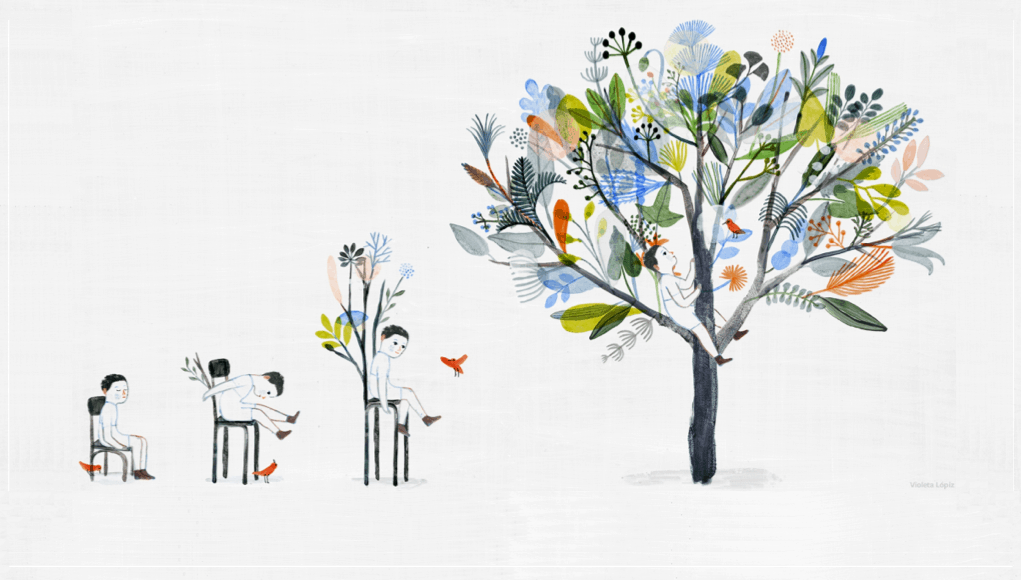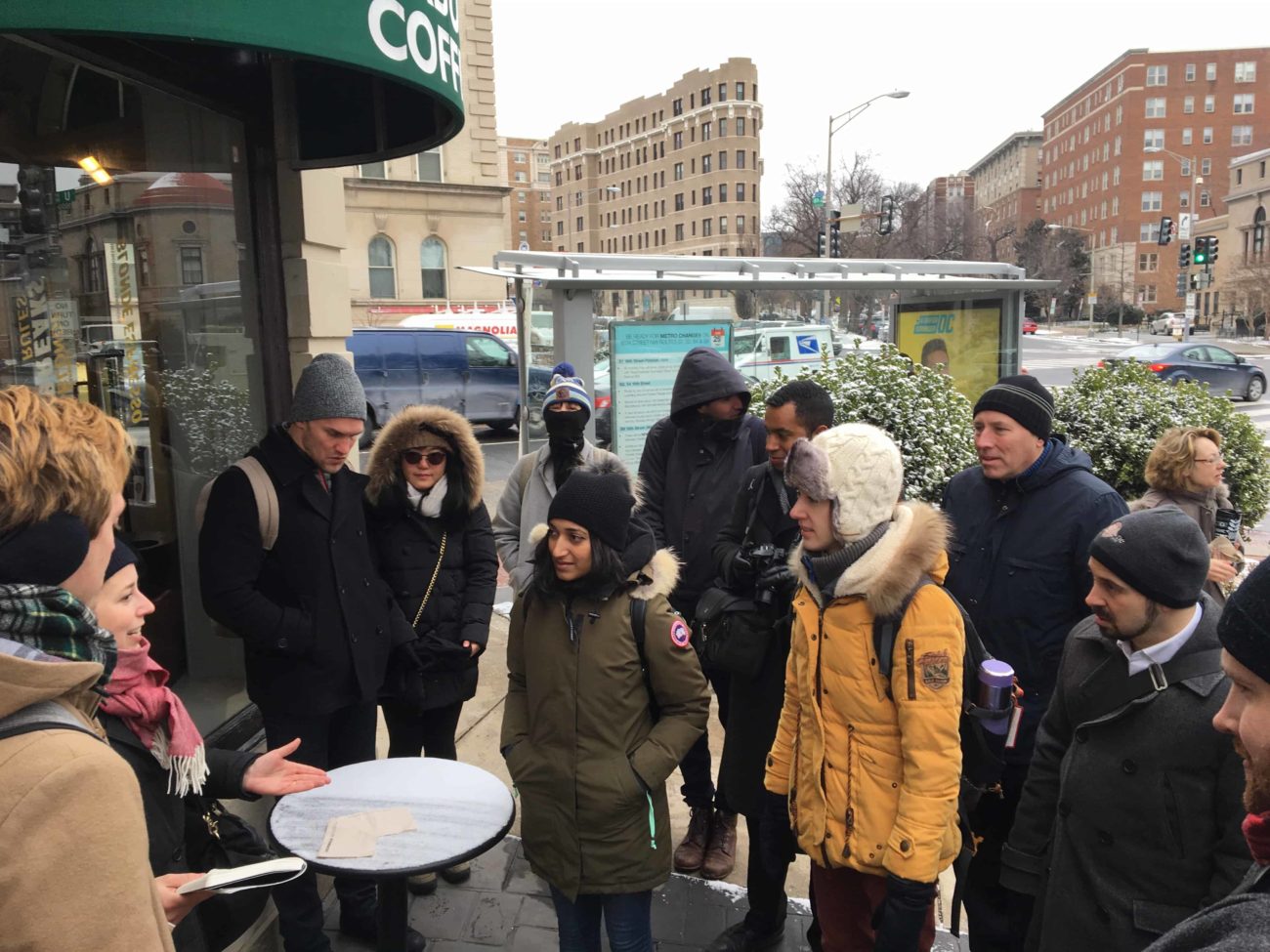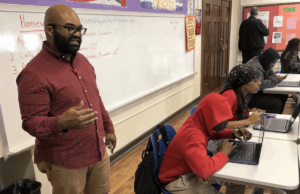Whittle School & Studios: Transforming Education for Global Good

Armed with a “big idea,” entrepreneur Chris Whittle has assembled a talented global team of thought leaders, educators, innovators, architects and designers with a shared goal of launching Whittle School & Studios, “the world’s first truly global school.” The Fall of 2019 will welcome the first 2 campuses in Washington DC and Shenzhen, China with additions each subsequent year, to total 36 campuses in 15 countries throughout the world.

With motivation fueled by “the power of education as a transformative force for global good,” the school’s goal is to “graduate students with the skills, knowledge, and character to succeed in the Innovation Age.” Through the thoughtful exploration of best learning practices and the strategic design of program aspects that do not currently exist, the creation of this global learning community will set a stage for learners to impact their local and global world well beyond campus walls and infuse the benefits of collaborative relationships with global learners and partners from across the planet.
A world-class staff, informed by a global academic advisory board and leading-edge partners, developed a school model that incorporates 10 important innovations that set the new standard for quality education.
Getting Smart served as a lead education design partner for the innovative school network. According to Project Director Adam Kulaas, “The design represents best-in-class learning in 10 dimensions, with a focus on preparing young leaders for global contribution.”
1. Personalized learning. It is no secret that personalizing learning increases student autonomy, ownership and buy-in. It solidifies a partnership with the educators, parents and partners within a learning community through tailoring learning to amplify each student’s social, emotional, physical and academic growth. It sets a stage for voice and choice in advocating needs that will elevate interest and relevance in learning.
Design Highlight: Every single element of the Whittle School & Studio design process has utilized, and demanded, presence of mind in empathizing with the lens of the learner. A non-negotiable in terms of design, it is woven into all aspects of the holistic experience. Teachers will be armed with the skills to inform and accelerate learning to meet the needs of students where they are at with intentional emphasis on where they will go. As the bedrock of the model, additional layers are identified in highlights below.

2. Holistic advisory. At Getting Smart, we view advisory as a vehicle for incubating and nurturing social and emotional development, with a cohesive balance to grow academically as they learn how to acquire new knowledge. It is a balanced approach to serving the whole learner en route to the identification of post-secondary opportunities, with the learning “currency” that qualifies them for successful transition and navigation of lifelong learning.
Design Highlight: With a shared philosophy and belief in the outcomes associated with high-quality advisory, the evolving design includes emotional, intellectual, physical, ethical, social and academic development targets with a few unique separators. Advisory is weighted as an equal partner with academic coursework, which is represented in master scheduling, and bolstered through staffing targets and an extension to students prior to 6th grade. This approach increases the validity of its role within the learning model and front loads fruition and successful progression of competencies identified within this advisory program.
3. Maker mindset. Students are the future, and inevitably inherit the responsibility of creating solutions to local and global issues in their current and future worlds. With increased urgency behind the value of a growth mindset, makerspaces and the associated tools and processes provide experiences in prototyping and “failing forward” with multiple iterations of design thinking en route to personalized discovery of new knowledge. It is a practice that breeds self-reflection and maximizes all senses and movements that are kinesthetically connection.
Design Highlight: With robust makerspaces on each campus and connected resources through each affiliated Center of Excellence and Studio, internal and external learners will have access to spaces to create in. As described in deeper detail below(Centers of Excellence and Studios), each campus will house physical space and pedagogy/curriculum supporting mindset development to inspire and equip students to apply learning through these resource-rich spaces. These are also vessels for bridging the learning community and makerspaces to the larger host city as a point of design emphasis. The weighted importance of expanding learning beyond the walls of the campus is another design pillar that exemplifies the model and will provide a positive impact for local and global good.
4. Local and global. As we highlighted recently, globally connected students and classrooms spark learning experiences that accelerate shared empathy and collaboration in addressing the challenges that our collective learners currently face. This mindset and the design actions behind making it a reality provide an opportunity to maximize local resources in relation to the global issues in partnership with immediate and distant learners.
Design Highlight: All Whittle School & Studios environments (Campuses, Centers of Excellence, and Studios) have intentionally created the infrastructure needed to bring the local and global learning experience to fruition. With multiple access points, their approach, both physical and design, will act as an example of how to facilitate and support a user experience that has fluidity in connecting local resources and learning with global contributions and collaboration.
5. Place-based education. Place-based learning offers a path and outlet to student-centered, personalized learning. It removes classroom walls and expands the learning community to grow a mindset of learning anytime, anywhere. As advocates for the benefits of this shift, we developed a thought leadership campaign to get you started, “Learning & The Power of Place.”
The Whittle design team (below) recently braved a cold blast to pilot some of the City as Classroom lessons in Washington DC. The team studied monuments in forgotten parks, hit historic campaign stops like Ben’s Chili Bowl and ate African food at Bokum Cafe in Adams Morgan while discussing global development.
 Design Highlight: The Whittle School & Studios Design Team is composed of experts within the field of experiential learning. The “City Core” integration and experience design will provide highlights from the inception of each campus as a learner partner to the host city where they reside. By identifying the rich culture and value associated with each location, students will maximize their experience through full immersion into each city and benefit from access to their global peers throughout the world, in person or virtually through multiple access points. This emphasized engagement model will also lend to pedagogical and curriculum alignment around application and engagement.
Design Highlight: The Whittle School & Studios Design Team is composed of experts within the field of experiential learning. The “City Core” integration and experience design will provide highlights from the inception of each campus as a learner partner to the host city where they reside. By identifying the rich culture and value associated with each location, students will maximize their experience through full immersion into each city and benefit from access to their global peers throughout the world, in person or virtually through multiple access points. This emphasized engagement model will also lend to pedagogical and curriculum alignment around application and engagement.
6. Centers of Excellence & Studios. In identifying our targets for 2018, Getting Smart continues to be committed to growing and unpacking innovative initiatives and opportunities that create the future of work and learning. Along this path, we are committed to maximizing the use of educational opportunities that reside within each local and global community to support students by infusing design thinking, high quality project-based learning, and community partnership.
Design Highlight: Each Whittle campus will have a Center of Excellence (C.O.E.) that is aligned with characteristics that make that city unique to the world. Students will be provided with learning experiences that bring these components to life and fuel deeper learning. They will be rich in facilitating mentoring relationships, and will act as a catalyst for relevant student-centered application of knowledge acquired. With emphasis on leadership development intertwined into all aspects of the learning design, each C.O.E. will utilize the United Nations Sustainable Development Goals as beacons for the creation of thematic targets.

In addition to the C.O.E., Whittle Studios will provide access to learning beyond the school days and deliver an additional opportunity for deeper learning and academic supports as they work with advisors to capture learning in online portfolios.
7. Talent development. A school can only be as successful as the faculty established to bring the experience to life. Onboarding, collaboration, reflection, evaluation and growth practices are all extremely relevant when designing a school or network. A meaningful approach to talent development requires a balanced design of efficiency and effectiveness and must include in a continuum framework that maximizes the talents and skills of the individuals within the learning network. In order to create world-class learning opportunities, networks must build opportunities for the development and expanded capacity to guide world-class work.
Design Highlight: In modeling learning design expectations and graduate profile components for the learners within the Whittle School & Studios, the holistic approach to designing talent acquisition and development has been intentional in mirroring the same global lens utilized to craft the learner experience. The faculty experience will be personalized and each staff member will be supported in growing their capacity to better serve each global student. A firm foundation of rich professional learning and collaboration systems that increase relationships with colleagues throughout the world will codify a partnered investment in each students social, emotional and academic development.
8. Beautiful, learner-centered space. Learning space plays an integral role in facilitating the experience and acting as a base for the culture of the community. Intentional alignment with the pedagogical philosophy, user and learner experience are a few elements that will create longevity within their design. It is also relevant that they are recognizing growth patterns when opening new facilities, with their foresight focusing in part on the ability to support expanded enrollment and address environmental factors associated with each location.
Design Highlight: In the architectural design of Whittle School & Studios there is an intentional alignment with pedagogy and instruction, illustrated below through a vision provided by renowned architect Renzo Piano, who has designed “inspiring environments for making, sharing, and growing—places where students can pursue their passions and achieve their highest potential.”


9. Learning abroad. In alignment with the value generally placed on opportunities for learners to experience the world through the eyes of other learners across the globe, technology has supported the ability to connect us all. In a recent blog, we highlighted the use of technology as a tool to increase access for global learning and the associated power that comes with the knowledge and skills to investigate the world, weigh perspectives, communicate ideas and take action. While it increases core knowledge and application, it’s also useful in terms of the human competencies gained through the empathy that comes with exploring other cultures and experiences.
Design Highlight: The connectivity of the global campus is driven by access to learners and cities throughout the world. Whittle Schools & Studios has taken a different approach through the frequency of the travel their students can experience: a ceiling does not exist. In the promotion of student integration into countless cultures and global insights in multiple formats, each student’s opportunity is limited only by their own passions and preferences. The model supports access points along a continuum of travel opportunities and experiences, including “summer programs, trimesters abroad, and full years abroad at Whittle campuses around the world.” With a balanced intention of growing knowledge and friendships, this element of the design will inevitably open experiences to students that will last a lifetime.
10. A global school. The concept of a global school inspires a belief in the idea that together, we can be and do better. It is a commitment to personalization that harnesses the potential of each learner with emphasis on human connections and the shared purpose that only learning and growing can provide. As we continue to be more intentional in creating learning networks based on opportunities that bring people together, we will truly accelerate the transformation of education.
The global school is informed by a Global Academic Board chaired by Getting Smart CEO Tom Vander Ark. “The opportunity for young people to learn with students around the world, study with experts at 30 Centers of Excellence, and travel to the world’s leading cities, makes this an exciting advance in global education,” said Vander Ark.

The advisory board includes Cindy Mi, CEO VIPKID; Todd Rose, Director of the Mind, Brain, and Education, Harvard and Co-founder of The Center for Individual Opportunity (author of The End of Average); Pavel Luksha, Russian Education Futurist (report author of Skills of the Future: How to Thrive in the Complex New World); and Melina Uncapher, Neuroscape Education Director and UCSF Neuroscientist.
At the launch event last night at the Andrew Mellon Auditorium (left), Chris Whittle introduced Chancellor Nicholas Dirks (who will join the Whittle team in June), who summarized the benefits of a Whittle education: the world’s most personalized school preparing globally-ready students in immersive language, art, and design experiences.
In the fall of 2019, Whittle School & Studios will open multiple “doors” to the world for students and educators. Armed with continued motivation to “transform education for global good,” the design components and implementation discoveries highlighted above will support shifts that will transform education. For more information, check out Whittle School & Studios.
For more, see:
- Ask About AI: The Future of Learning and Work
- Building a Shared Vision of the #FutureofLearning
- Educating for Global Competence: 6 Reasons, 7 Competencies, 8 Strategies, 9 Innovations
- Getting Ready for the Jobs of the Future
This post includes mentions of a Getting Smart partner. For a full list of partners, affiliate organizations and all other disclosures please see our Partner page. If your organization is ready to make an impact and would like a partner in creating the future of learning, contact our Services Team.
Stay in-the-know with all things EdTech and innovations in learning by signing up to receive the weekly Smart Update.







0 Comments
Leave a Comment
Your email address will not be published. All fields are required.